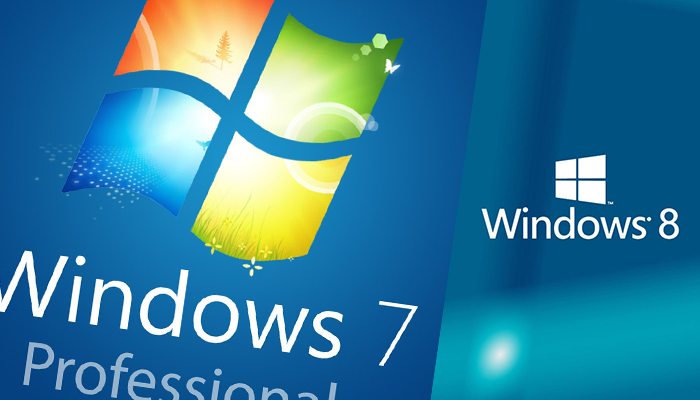As the years go by traditional desktop and laptop computers evolve. Whether we want to go along with that evolution is by choice and that’s only if we’re satisfied with the current computer model that we have and not looking to upgrade to new hardware. But if you are looking to buy a new computer 2015+, you have to decide what operating system you would like to use. If you’re happy with Windows 8 and what’s to come (windows 10), then your fine, but if you want to continue using Windows 7 whether its on a older computer model or new then this article is for you.
In this article we will be showing you how to install and use Windows 7 on newer machines. Most new computer systems whether it be from HP, Dell, or Asus has started to make their hardware only compatible with the latest Windows 8.1 operating system. Now don’t get me wrong, I love using Windows 8, but most of you are not ready or just don’t want to take that next step.
Windows 7 is considered to be an excellent operating system and easy to use. The “true” upgrade that many have appreciated when migrating from Windows XP. For those individuals who still prefer to use Windows 7 when upgrading to a newer machine, I will show you how it’s done below.
What to do when you purchased a computer installed with Windows 8.1?
When purchasing a new computer (2015+ model), you have to already assume that it is coming with Windows 8.1 installed. Just like how Microsoft stopped support for Windows XP, it looks like computer manufacturers are starting to do the same with Windows 7.
Step 1 – Drivers
- Find the model number of the computer (Example, HP Pavilion 8290, Dell XPS X8700, ASUS N550JX-DS74T)
- Go to the manufactures website (HP, Asus, Dell, etc.) and look for a tab or button that says Download Drivers. Usually located under the Support Tab.
- Type in the computers model number and select Windows 7 as your operating system.
- The next page will list all the drivers necessary drivers needed.
- Make sure you download Network Drivers (Ethernet & Wireless), Graphic Card, and Sound Card. Those 3 are the most essential, everything else that is labeled as recommended should be downloaded as well.
- Place all of your drivers on a USB flash drive.
What if Windows 7 option doesn’t show for the Operating System?
My recommendation is to still download all the drivers by following steps 1 through 6 from the Windows 8 operating system option. Please note that even after downloading Windows 8 drivers, they may not work on Windows 7. I have a solution that proceeds after Step 2 below.
Step 2 – Installing Windows 7
Now that you have your drivers for your computer model, follow the steps below:
1) Start your computer and insert the Windows 7 Installation Disc.
2) When prompted to press any key to run disc, do so.
3) Follow all on-screen instructions. Make sure to install Windows on the right partition.
I usually delete/merge existing partitions into one. Then if I need to create a second partition, I do so.
4) After Windows 7 is installed you are ready to install your drivers.
5) Plug-in your USB flash drive, then install each driver one by one.
6) After installing all drivers you should be good to go.
What if Windows 8 drivers don’t work on Windows 7?
One of the main problems that arise is the drivers you downloaded don’t work. Especially drivers for your network card (ethernet and or wireless).
Below are a few options to getting the internet to work on your computer and to get drivers that work.
- You will need to purchase and install either a USB Ethernet Adapter, USB Wireless Adapter or a Network Card that supports both.
- USB Ethernet Adapter allows you to connect your Ethernet cable to your computer via USB.
- USB Wireless Adapter allows you to connect your computer to any WiFi enabled device or service.
- Network Card. You will need a network card that replaces your existing card. Make sure the new network card is compatible with Windows 7.
- After successfully installing a network connection for your computer, it’s time to download all the missing drivers. A software that I highly recommend that finds all missing drivers for any computer is Driver Detective from DriversHQ. They offer a free trial to begin before purchasing for full program capabilities.
Once you have downloaded and installed Driver Detective, start the scan and it will locate all the missing drivers and find compatible drivers that will work with your new machine and support Windows 7 at the same time.
Your computer should now be running smoothly. Any questions you have, please sound below in the comment section. Thanks for reading.
